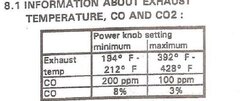I have a temp of approx 80c on the outer lining of my exhaust just before it enters the thimble. What are the temps others are experiencing? I contacted selkirk a few minutes ago and they had no clue what is acceptable for their type L vents.
Temperature of vent pipe before it exits through the thimble
- Thread starter northernweather
- Start date
-
Active since 1995, Hearth.com is THE place on the internet for free information and advice about wood stoves, pellet stoves and other energy saving equipment.
We strive to provide opinions, articles, discussions and history related to Hearth Products and in a more general sense, energy issues.
We promote the EFFICIENT, RESPONSIBLE, CLEAN and SAFE use of all fuels, whether renewable or fossil.



